-
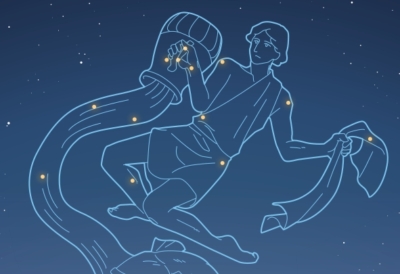
みずがめ座
みずがめ座はプトレマイオスによって設定された星座です。面積は980平方度で肉眼星数は165個。 トレミー48星座のひとつで、黄道12星座の一つでもあります。 メソポタミアでは偉大なものという意味の「グラ」と呼ばれていました。 「カタステリスモイ」では大神ゼウスに神酒を注ぐ役目の少年ガニュメーデスに見立てられています。 神々の酒宴の際に酌をしていたへーべがヘルクレスと結婚してその役をする者がいなくなり、ゼウスが鷲になってさらってきたという伝承が残っています。 【物語の出典】 星の文化史事典 株式会社白水社(2019年12月) 全天星座百科 河出書房新社(2011年2月)
-
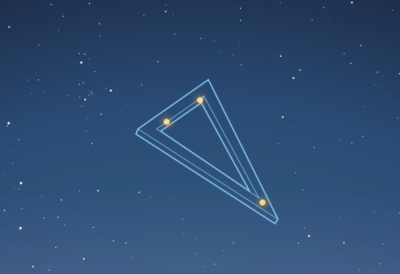
さんかく座
さんかく座はプトレマイオスによって設定された48星座の一つです。面積は132平方度で肉眼星数は26個。 「カタステリスモイ」の伝承によると、おひつじ座が暗い星座のため目印としてヘルメスがゼウスの名の最初の文字をここに置いたという説と、エジプトのナイル河が作る△の姿だとする説の二つが紹介されています。 【物語の出典】 全天星座百科 新版(株)河出書房新社(2011年2月) 星の文化史事典 (株)白水社(2019年12月)
-
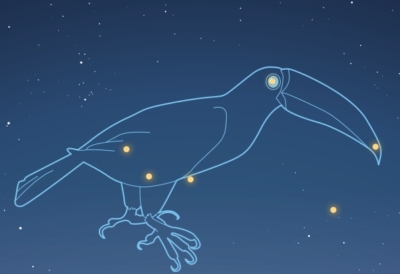
きょしちょう座
きょしちょう座は大航海時代に作られた南天の新星座の一つです。面積は295平方度で、肉眼星数は43個。 オランダのペーテル・ケイセルとフレデリック・ハウトマンの南半球での観測を元にペトルス・プランキウスが1598年に天球儀に描いて発表しました。 その後1603年にドイツのヨハン・バイエルが星図ウラノメトリアに記載し広まったとされています。 きょしちょう座は「巨嘴鳥座」と書き、くちばしが大きい南米の鳥を指しています。 【物語の出典】 全天星座百科 新版(株)河出書房新社(2011年2月) 星の文化史事典 (株)白水社(2019年12月)
-
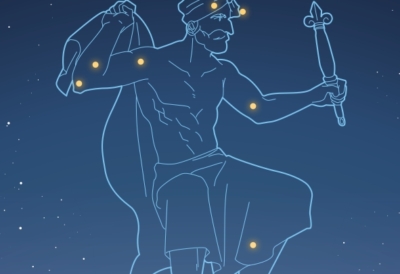
ケフェウス座
ケフェウス座はプトレマイオスによって設定されたトレミー48星座の一つです。 面積は588平方度で肉眼星数は148個。 古代ギリシアの伝承に登場するエチオピア王がモデルとなり、アンドロメダの父で、カシオペヤの夫とされています。 カシオペヤ座のすぐ東隣にあるものの、目立つ星の並びがないので探しにくいのが特徴です。 【物語の出典】 全天星座百科 新版 (株)河出書房新社(2011年2月) 星の文化史事典, (株)白水社(2019年12月)
-
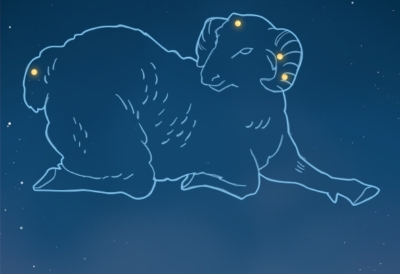
おひつじ座
おひつじ座はプトレマイオスによって設定されたトレミー48星座の一つです。また黄道12星座の一つでもあり、面積は441平方度で肉眼星数は85個。 「カタステリスモイ」によると、おひつじ座は金色の毛をした空飛ぶ羊とされています。 テッサリア王アタマスの息子プリクソスとその妹ヘレが継母イーノーにいじめられ、神へのいけにえにされそうになったため、母ネペレがヘルメスまたはゼウスから得た空飛ぶ金の羊を送り二人を逃がしたという伝承があります。 【物語の出典】 全天星座百科新版 (株)河出書房新社(2011年2月) 星の文化史事典 (株)白水社(2019年12月)
-
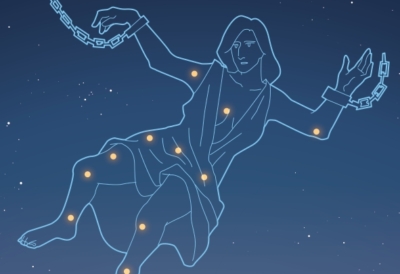
アンドロメダ座
アンドロメダ座はプトレマイオスによって設定された星座です。古代エチオピアの王女アンドロメダ姫が、鎖に繋がれた様子をイメージした星座として広く知られています。 エチオピア王家が王ケフェウスと王妃カシオペヤによって統治されていたころ、とても美しく自尊心の強かったカシオペヤが「私の美しさには海の神の娘たちもかなわない」と発言しました。それを聞いた海の神ポセイドンは怒り心頭で海に住む大クジラをエチオピアに向かわせ津波を起こさせました。 この惨事を収めるため、カシオペヤとケフェウスは信託に従って娘のアンドロメダをいけにえに捧げます。その後、アンドロメダを助けに来たペルセウスとアンドロメダは結婚したと言われています。 【物語の出典】 全天星座百科新版 (株)河出書房新社(2011年2月) 星の文化史事典 (株)白水社(2019年12月)
-

やぎ座
やぎ座はプトレマイオスによって設定されました。面積は414平方度で肉眼星数は79個。 プトレマイオスの48星座の一つであり、黄道十二星座の一つでもあります。 メソポタミアではスフル・マシュと呼ばれていました。スフルはシュメール語で巨大な鯉、マシュは牡山羊という意味で、上半身が山羊、下半身が魚のエアという神の姿が描かれています。エアはバビロニアでは主神マルドゥクの父で水と知恵の神。ギリシアには山羊魚の形のまま伝わり、アエゴケロスと呼ばれていました。それが次第に山羊の姿の牧神パンと同じものとされるようになりました。パンはヘルメスの子、またはゼウスの子とされ、上半身が人間で下半身は山羊、そして山羊の角を持っています。 昔、神々がエジプトに集まっていた際に怪物テュポンが襲ってきました。神々は驚いてさまざまな姿に変身。その中で、パンは川に飛び込み水面から上は山羊、水面から下は魚になり逃げました。その姿があまりに滑稽だったのでゼウスが星座に加えたといわれています。 【物語の出典】 星の文化史事典、株式会社白水社(2019年12月) 全天星座百科、河出書房新社(2011年2月)
-
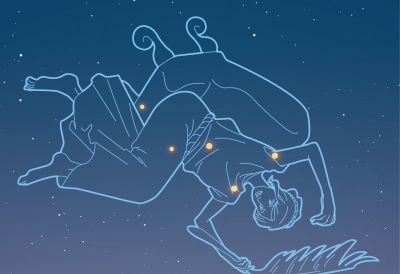
カシオぺヤ座
カシオペヤ座はプトレマイオスによって設定されました。日本では秋の日暮れ頃、北の空に見えます。カシオペヤ妃が椅子に縛り付けられている様子をイメージした星座です。 エチオピア王家が王ケフェウスと王妃カシオペヤによって統治されていたころ、とても美しく自尊心の強かったカシオペヤが、「私の美しさには海の神の娘たちもかなわない」と発言しました。 それを聞いた海の神ポセイドンは怒り心頭し、海に住む大クジラをエチオピアに向かわせ津波を起こさせました。この惨事を収めるため、カシオペヤとケフェウスは信託に従って娘のアンドロメダをいけにえに捧げます。 【物語の出典】 全天星座百科 新版,(株)河出書房新社(2011年2月) はじめての星座案内,(株)誠文堂新光社(2001年7月) 星座天体観察図鑑,成美堂出版(2002年)
日本から見た秋の星座
秋は明るい星を持つ星座が少ない季節ですが、カシオペヤ、アンドロメダ、ペガサスなどギリシャ神話に登場する古代エチオピア王家に関係する星座が多く見られ、壮大な物語が見る人を楽しませてくれる季節です。






